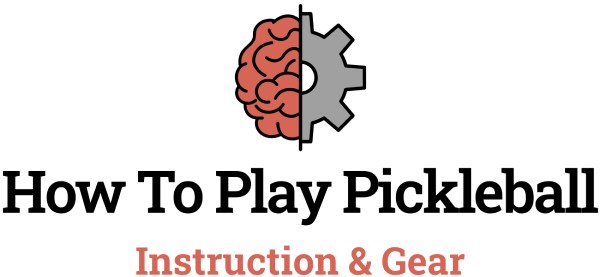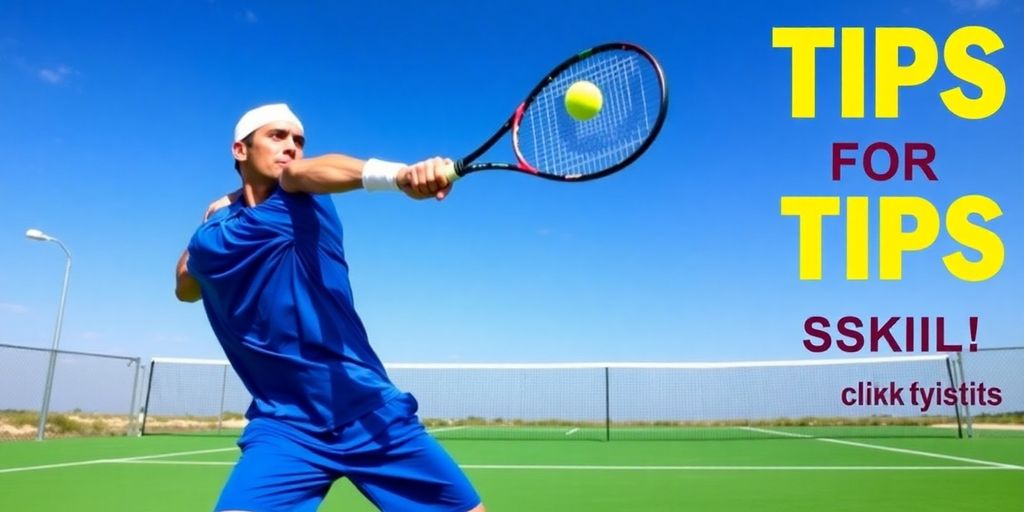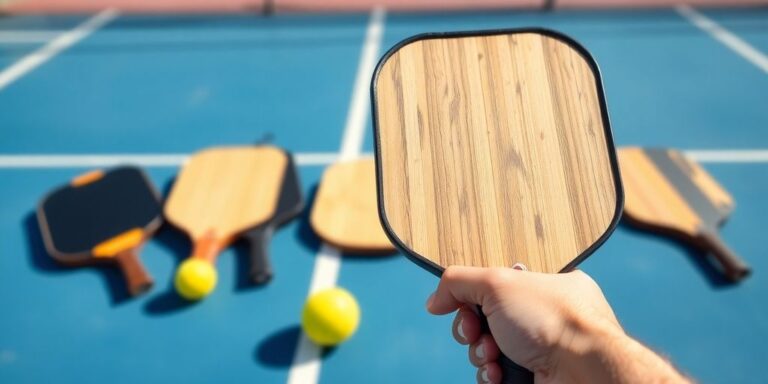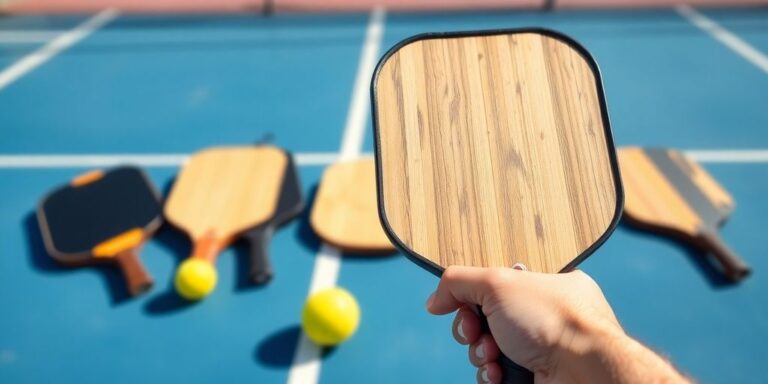If you’re looking to up your tennis game, you’re in the right place. Whether you’re just starting out or you’ve been playing for years, there are plenty of tennis tips online that can help you improve. This guide covers everything from setting up your practice space at home to using technology for game analysis. Let’s dive in and see how you can practice effectively, boost your skills, and enjoy the game even more!
Key Takeaways
- Create a dedicated practice area at home to enhance your skills.
- Focus on solo drills to work on your serve and footwork.
- Incorporate strength and endurance training into your routine.
- Use visualization techniques to improve your mental game.
- Leverage technology like apps and video analysis for feedback.
Setting Up Your Practice Area

Choosing the Right Space for Practice
Okay, so you want to practice tennis at home? Awesome! First things first, you gotta find the right spot. It doesn’t have to be huge, but you need enough room to swing your racket without hitting the ceiling or a family member. A garage, backyard, or even a spacious living room can work. The key is safety and enough space to move. Make sure there aren’t any breakables nearby – trust me, you’ll thank me later.
Think about the surface too. Concrete is okay, but grass or a softer surface is easier on your joints. If you’re indoors, make sure the floor isn’t too slippery.
Essential Equipment for Home Training
Alright, now that you’ve got your space, let’s talk gear. At the very least, you’ll need:
- A tennis racket (duh!).
- A bunch of tennis balls. Seriously, you’ll lose some.
- A target. This could be a wall, a net, or even just a chair.
If you’re feeling fancy, you could also get a rebounder net or a ball machine. Those are great for solo practice. You can even use a smart racquet to track your progress.
Creating a Safe and Effective Environment
Safety first, always! Clear the area of any obstacles. Make sure the lighting is good, so you can see what you’re doing. And most importantly, warm up before you start practicing. You don’t want to pull a muscle. Also, set some goals for each practice session. What do you want to improve? Your serve? Your backhand? Having a goal will help you stay focused and motivated. Remember, the goal is to mimic real court conditions as much as possible. By carefully selecting your space and equipment, you’re building a personalized training ground tailored to your needs.
Essential Tennis Drills Solo
Practicing tennis by yourself doesn’t have to be boring! With the right drills, you can really improve your game without even stepping onto a court. It’s all about focusing on what you can control and making the most of your time.
Drills to Improve Your Serve
Serving solo can be super effective. Focus on consistency and placement. Here’s how to make the most of it:
- Target Practice: Set up targets (cones, towels) in the service box and aim for them. This helps with accuracy.
- Consistency Drill: Just focus on getting the serve in. Forget power, just groove the motion.
- Varying Spin: Practice flat, slice, and topspin serves. Get a feel for how the ball reacts.
Solo serving is great because you can take your time and really focus on your technique without the pressure of a match. Try filming yourself to spot any hitches in your motion.
Footwork Exercises for Better Movement
Good footwork is key in tennis, and you can work on it anywhere. Here are some drills:
- Shadow Drills: Mimic common tennis movements (split step, shuffle, crossover) without a ball. tennis movements This builds muscle memory.
- Cone Drills: Set up cones in different patterns and practice moving between them quickly. Focus on agility and balance.
- Ladder Drills: Use an agility ladder to improve foot speed and coordination.
Target Practice for Precision Shots
This is where you really dial in your accuracy. Grab a bucket of balls and get to work!
- Wall Volleys: If you have a wall, practice volleys. Focus on keeping the ball in front of you and using a compact swing.
- Groundstroke Targets: Set up targets on the ground and aim for them with your groundstrokes. Vary your distance and angles.
- Serving Targets: As mentioned before, target practice is great for serves too! pickleball strategies Aim for different spots in the service box to improve placement.
| Drill | Focus | Benefits |
|---|---|---|
| Wall Volleys | Compact swing, control | Improves reaction time and hand-eye coordination |
| Groundstrokes | Accuracy, consistency | Enhances shot placement and depth |
| Serving Targets | Placement, spin | Develops a more versatile serve |
Enhancing Your Physical Fitness
It’s easy to focus on technique when you’re trying to get better at tennis, but don’t forget about your body! Being in good shape can seriously improve your game. It’s not just about being strong; it’s about having the stamina to last through long matches and the flexibility to avoid injuries. Let’s look at some ways to get physically ready for tennis.
Strength Training for Tennis Players
Strength training is super important for tennis because it helps you hit the ball harder and move around the court faster. Think about it: strong legs let you sprint to the net, and a strong core helps you keep your balance when you’re swinging.
Here are some exercises to consider:
- Squats and lunges for leg power
- Push-ups and rows for upper body strength
- Planks for core stability
It’s a good idea to talk to a trainer or coach to figure out what exercises are best for you. They can help you create a plan that fits your needs and goals. Also, make sure you’re using the right form to avoid getting hurt.
Improving Endurance and Stamina
Tennis matches can be long, so you need to be able to keep going even when you’re tired. That’s where endurance training comes in. It helps you build up your cardiovascular system so you can play at a high level for longer. Consider injury prevention strategies to keep you on the court.
Here are some ways to improve your endurance:
- Running: Long, slow runs are great for building a base.
- Interval training: Short bursts of high-intensity exercise followed by rest periods can really boost your stamina.
- Cycling: A good low-impact option for building endurance.
Flexibility Exercises to Prevent Injuries
Flexibility is often overlooked, but it’s really important for preventing injuries. When your muscles are flexible, they’re less likely to get strained or torn. Plus, flexibility can help you move more freely on the court. The future of pickleball attracts more players, but tennis is still king!
Here are some flexibility exercises to try:
- Hamstring stretches: Keep those legs loose!
- Shoulder stretches: Important for serving and hitting overheads.
- Back stretches: Helps with rotation and preventing back pain.
It’s a good idea to stretch before and after you play tennis. Dynamic stretching before you play can help warm up your muscles, while static stretching after you play can help them cool down and recover.
Improving Mental Game at Home
The mental side of tennis? It’s just as important as hitting the ball. Seriously. You can have the best serve in the world, but if you’re mentally checked out, it won’t matter. Working on your mental game at home can really boost how you play when you’re actually on the court. It’s all about getting a strong mindset, staying focused, and bouncing back when things get tough. It takes time and effort, but it’s worth it.
Visualization Techniques for Success
Okay, so visualization might sound a little out there, but hear me out. It’s basically like creating a movie in your head where you’re crushing it on the court. Imagine yourself acing that serve, nailing that forehand, and winning the match. The more real you make it in your mind, the more prepared you’ll be when you’re actually playing. Try to visualize different scenarios, not just the perfect ones. What do you do when you’re down a set? How do you handle a tough opponent?
- Find a quiet space where you won’t be disturbed.
- Close your eyes and take a few deep breaths to relax.
- Imagine yourself playing a great match, focusing on the details.
Building Focus and Concentration
Tennis matches can be long, and your mind can wander. It happens to everyone. But learning to keep your focus is key. Meditation and mindfulness exercises can help a lot. It’s about training your brain to stay in the present moment, instead of dwelling on past mistakes or worrying about the future. Think of it like brain health training for the court.
Staying present is so important. When you’re thinking about that bad call from the last point, you’re not focused on the next one. Learn to let it go and refocus. It’s a skill, and it takes practice.
Developing Resilience During Matches
Tennis is full of ups and downs. You’re going to lose points, games, and even matches. It’s part of the game. The key is how you react. Resilience is about bouncing back from those setbacks and not letting them get you down. It’s about staying positive and building a resilient mindset, even when things are tough. Here’s how you can work on it:
- Positive Self-Talk: Replace negative thoughts with positive ones. Instead of saying "I always miss this shot," try "I’m going to nail this next one."
- Deep Breathing: When you feel yourself getting frustrated, take a few deep breaths to calm down.
- Focus on What You Can Control: You can’t control the weather, the umpire, or your opponent’s shots. But you can control your effort, your attitude, and your strategy. Focus on those things.
| Situation | Negative Thought | Positive Thought |
|---|---|---|
| Missed Easy Shot | "I’m so bad at this." | "I’ll get the next one. Focus!" |
| Down a Break | "I’m going to lose." | "I can break back. One point at a time." |
| Bad Call by Umpire | "This is so unfair!" | "Okay, next point. Let it go." |
By working on these mental skills at home, you’ll be much better prepared to handle the pressures of a match and enhance your pickleball serve. It’s like having a secret weapon that your opponent doesn’t even know about.
Analyzing Your Game with Technology
Using Smart Racquets for Performance Tracking
Okay, so smart racquets are pretty cool. They’re not just about hitting the ball; they’re about understanding how you’re hitting the ball. These racquets have sensors that track all sorts of data. I remember when I first tried one, I was shocked at how much I didn’t know about my own game.
Here’s a quick rundown of what they usually track:
- Shot Speed: How fast are you swinging?
- Spin Rate: How much spin are you generating?
- Impact Location: Where on the racquet are you hitting the ball?
It’s like having a coach built into your racquet. You can see your strengths and weaknesses in black and white. It’s not always pretty, but it’s honest.
Video Analysis for Technique Improvement
Video doesn’t lie. I hate watching myself play, but it’s so helpful. Set up your phone or camera, record yourself playing, and then actually watch the footage. You’ll spot things you never noticed before. Are you bending your knees enough on your forehand? Is your serve motion as smooth as you think it is?
Things to look for:
- Footwork: Are you moving efficiently?
- Swing Path: Is your swing fluid and consistent?
- Body Position: Are you balanced and in control?
Apps for Skill Development and Feedback
There are a ton of tennis apps out there now. Some are for tracking your stats, some give you drills to work on, and some even let you compare your technique to the pros. I’ve found a few that I really like. One app I use lets me record my serves and then it gives me feedback on my shot depth and consistency. It’s not perfect, but it’s way better than just guessing.
Here’s a table of some popular app features:
| App Feature | Description |
|---|---|
| Stat Tracking | Records your scores, errors, and other key stats. |
| Drill Library | Provides a library of drills to improve specific skills. |
| Technique Analysis | Analyzes your technique and provides feedback. |
| Match Recording | Allows you to record your matches and review them later. |
| Opponent Scouting | Helps you analyze your opponents’ strengths and weaknesses. |
Learning from the Pros

Okay, so you wanna get better at tennis? One of the best ways is to see what the pros are doing. It’s not just about copying them blindly, but understanding why they do what they do. Let’s break down how you can learn from the best.
Studying Player Profiles and Strategies
Think of this as doing your homework, but way more fun. Instead of memorizing dates, you’re looking at how Sabalenka’s effective tennis strategies work on the court. What are their strengths? What are their weaknesses? How do they handle pressure?
- Identify a player whose style resonates with you. Do you like aggressive baseliners? Crafty net players? Find someone who plays a game you admire and want to emulate.
- Research their background. Where did they train? What coaches did they have? What were their junior results?
- Analyze their stats. Look at their win/loss records on different surfaces, their serve percentages, their break point conversion rates. This gives you a quantitative look at their game.
Analyzing Match Footage
Watching tennis is fun, but watching it analytically is where the learning happens. Don’t just sit back and enjoy the show; actively try to understand what’s going on.
- Focus on specific aspects of the game. Maybe you want to improve your serve. Watch how the pros toss the ball, how they generate power, and where they aim.
- Use slow motion and replay. Most streaming services let you slow down the action. This is super helpful for seeing the details of a player’s technique.
- Pay attention to patterns. Do they tend to go cross-court on big points? Do they favor their forehand in certain situations? Recognizing these patterns can give you insights into their strategy.
Incorporating Professional Techniques into Your Game
This is where the rubber meets the road. You’ve studied the pros, you’ve analyzed their matches, now it’s time to put what you’ve learned into practice. But remember, you’re not trying to become a carbon copy of Roger Federer. You’re trying to adapt their techniques to your own game.
- Start small. Don’t try to overhaul your entire game overnight. Pick one or two things you want to work on and focus on those.
- Get feedback. Ask a coach or a more experienced player to watch you and give you advice. It’s hard to see your own flaws.
- Be patient. It takes time to change your technique. Don’t get discouraged if you don’t see results immediately. Keep practicing, and eventually, you’ll start to see improvement.
Learning from the pros is a continuous process. It’s not something you do once and then forget about. Keep watching, keep analyzing, and keep practicing. The more you learn, the better you’ll become.
Here’s a quick table to help you organize your learning:
| Area of Focus | Pro Technique | How to Incorporate | Resources |
|---|---|---|---|
| Serve | Kick serve | Practice the toss and wrist snap | YouTube tutorials, coaching sessions |
| Forehand | Western grip | Adjust your grip gradually | Wall practice, video analysis |
| Footwork | Split step | Focus on timing and balance | Cone drills, agility ladder |
Remember to also check out resources that can help you understand skill levels in pickleball and tennis, as the principles of improvement are similar across sports.
Overcoming Common Challenges
Dealing with Performance Anxiety
Okay, so you’re not alone if you get butterflies before a match. Everyone does! It’s how you handle it that counts. Performance anxiety can really mess with your game if you let it. One thing I’ve found helpful is to focus on what you can control. You can’t control whether you win or lose, but you can control your preparation, your effort, and your attitude.
Here are a few things that might help:
- Deep breathing exercises: Seriously, they work. Try box breathing (inhale for 4, hold for 4, exhale for 4, hold for 4). Repeat a few times.
- Positive self-talk: Instead of thinking "I’m going to mess up," try "I’ve practiced this, I’m ready."
- Focus on the process, not the outcome: Think about hitting the ball well, not winning the point.
Remember, anxiety is just energy. Try to channel that energy into your game. Use it to fuel your focus and intensity. Don’t let it paralyze you.
Strategies for Staying Motivated
Tennis is hard. There are going to be times when you just don’t feel like practicing. It happens. The key is to find ways to stay motivated even when you’re not feeling it. One thing that works for me is setting small, achievable goals. Instead of saying "I want to be a pro," try "I want to improve my serve percentage this week." Small wins can keep you going. Another thing is to find a practice partner who pushes you. Having someone to compete with can make practice more fun and improve your tennis skills.
Here’s a table of motivation boosters:
| Strategy | Description
Facing challenges is a part of life, but you can overcome them! Whether it’s dealing with stress, time management, or finding motivation, there are ways to tackle these issues. Don’t let obstacles hold you back. Visit our website for tips and resources that can help you succeed. Take the first step towards a better you today!
Wrapping It Up: Your Path to Tennis Mastery
So there you have it! Whether you’re just starting out or you’ve been playing for years, these tips can really help you step up your game. Remember, practice is key, and using the right techniques can make a big difference. Don’t forget to keep your mind in the game, too. It’s not just about hitting the ball; it’s about strategy and staying focused. Take what you’ve learned here and start applying it. The more you practice, the better you’ll get. So grab your racket, find a space to practice, and get to work. Your next match could be your best one yet!
Frequently Asked Questions
What equipment do I need to practice tennis at home?
To practice tennis at home, you need a racket, some tennis balls, and a target area. You can also use a rebounder net or a ball machine for more variety.
How can I improve my tennis serve on my own?
You can improve your serve by practicing your toss, focusing on your grip, and using drills that help you work on your technique.
What exercises can help me get better at tennis?
Exercises like strength training, cardio workouts, and flexibility routines can help improve your overall tennis game.
How do I stay motivated to practice tennis at home?
Setting small goals, tracking your progress, and mixing up your practice routine can help keep you motivated.
What mental strategies can I use to improve my game?
Techniques like visualization, mindfulness, and positive self-talk can help you develop a stronger mental game.
How can technology help me improve my tennis skills?
Using apps and smart racquets can give you feedback on your performance and help you analyze your technique for better improvement.




